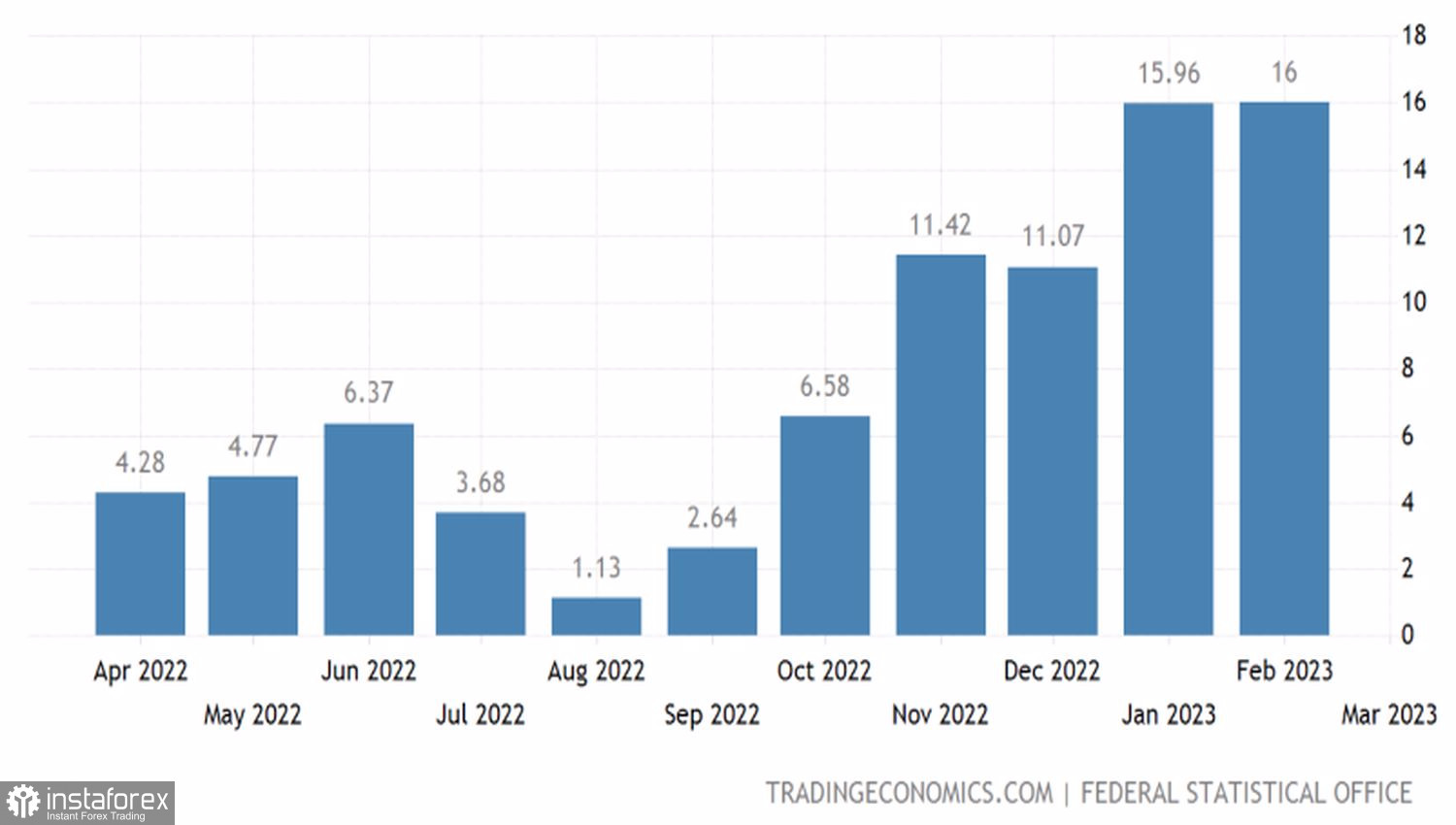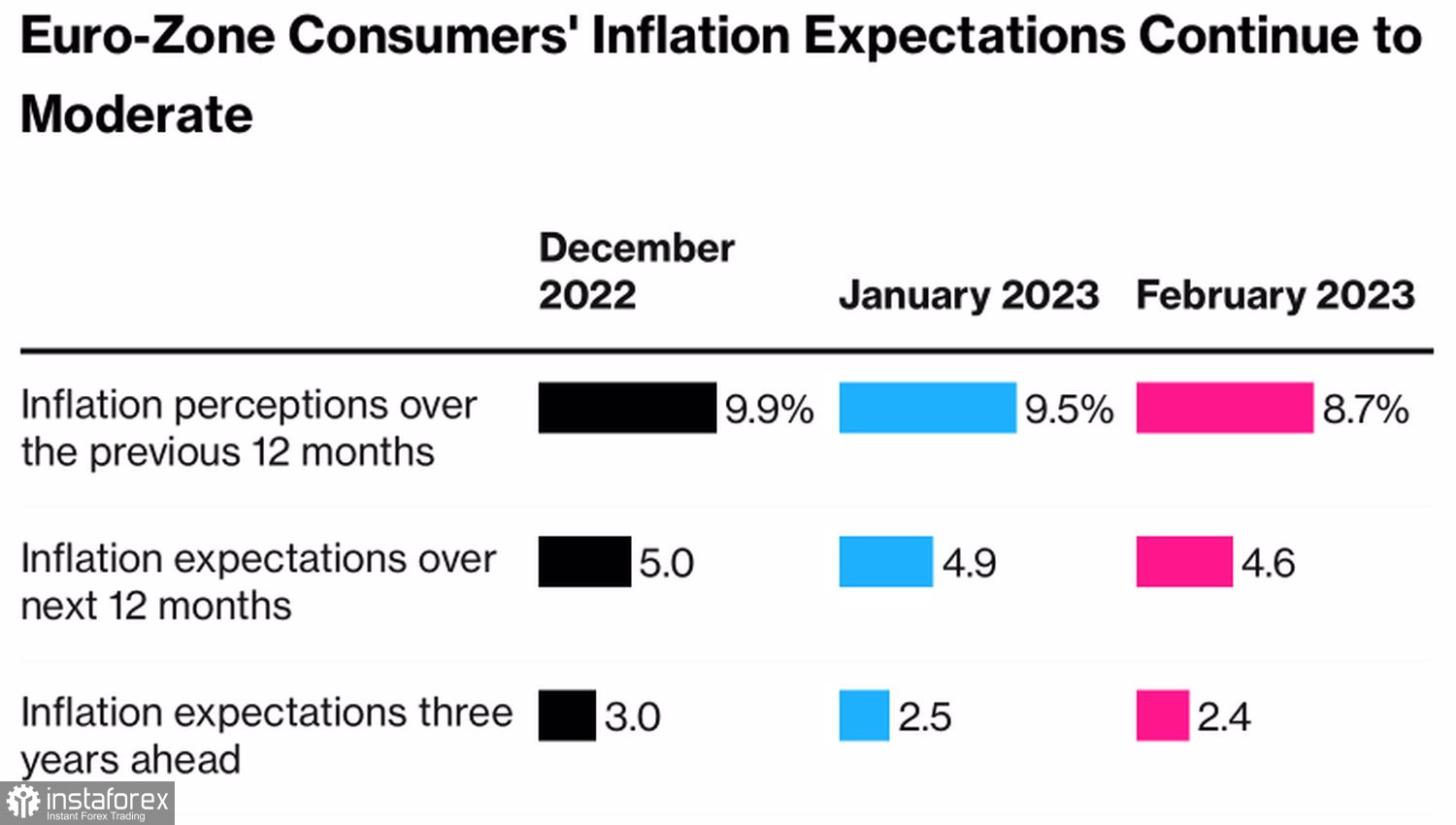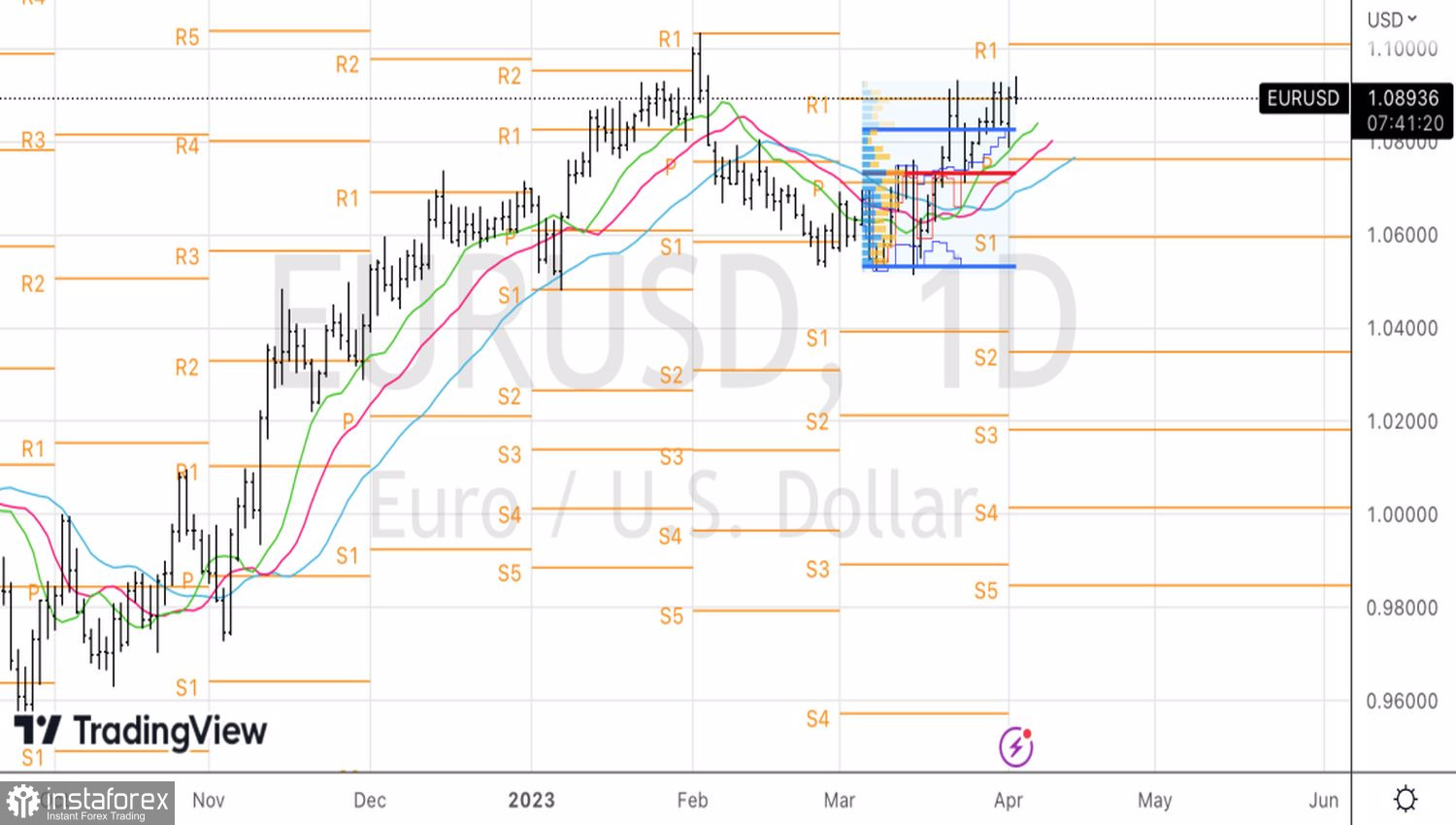EURUSD buyers have come a long way before the outlook for the pair began to look unambiguously bullish. Back in Q4 2022, investors were talking about the high probability of a recession in the eurozone economy under the influence of the energy crisis, and to them, the ECB seemed too slow to compete with the Fed. However, as events have shown, a recession is avoidable.
Recent statistics on German foreign trade confirm that the leading economy of the currency bloc was able to rise from its knees. Exports increased by 4% and imports by 4.6% in February, well above the forecasts of +1.6% and +1%, respectively. German economy is recovering, and the surplus of trade balance is huge (€16bn). Due to these statistics there is a good chance that EURUSD will move from a trading range of 1.05–1.1 to 1.07–1.12.
Dynamics of the German trade balance

Despite the decline of the annual inflation expectations in the euro area in February from 4.9% to 4.6% and the three-year inflation expectations from 2.5% to 2.4%, the ECB won't give up on continuing the cycle of monetary tightening. This contrasts with the position of the Fed, which amid the banking crisis and slowing economy and inflation, is ready to put an end to the process of raising the federal funds rate.
The main thing here is not to overreact. An overly aggressive monetary restriction is fraught with recessions. But history shows that inflation has not always returned to the 2% target thanks to an economic slowdown. Economists at Bloomberg estimate that in the past, it took a 2%–3% contraction in GDP to lower consumer prices by 1 percentage point. But since the link between unemployment and inflation has declined since the 1980s, it may deeply wound the U.S. economy.
Dynamics of inflation expectations in the Eurozone

The Fed, however, still believes in a soft landing. The central bank believes deep down that it has done its job. The effects of aggressive rate hikes are affecting the economy with a time lag. The key now is to stop in time. Pause or end the cycle of monetary tightening. Markets are demanding not only that, but a dovish reversal from the Fed, with borrowing costs falling by the end of 2023.

Thus, recession fears from Europe to the U.S., the near end of the Fed's rate hike cycle and a still resolute ECB are drawing a bright future for the major currency pair. By the end of 2023, it can rise to 1.14–1.15.
Technically, Double Top or Anti-Turtles reversal patterns may form on the daily chart. An alternative scenario is the recovery of the upward trend. Everything will depend on the bulls' ability to storm the resistance at 1.0925. It is likely that they will succeed, but probably not on the first try. In any case, we continue to focus on buying the euro on pullbacks or breaking through resistance.
 English
English 
 Русский
Русский Bahasa Indonesia
Bahasa Indonesia Bahasa Malay
Bahasa Malay ไทย
ไทย Español
Español Deutsch
Deutsch Български
Български Français
Français Tiếng Việt
Tiếng Việt 中文
中文 বাংলা
বাংলা हिन्दी
हिन्दी Čeština
Čeština Українська
Українська Română
Română

